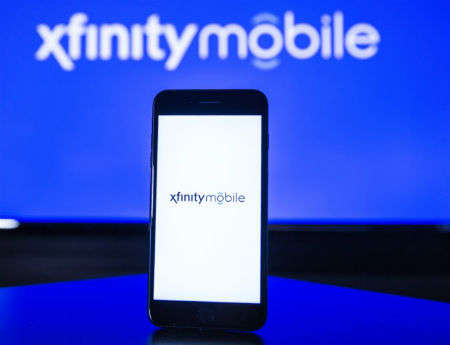Xfinity Mobile Starting to See ‘Real Momentum’

It’s still early days, but Xfinity Mobile, a service launched by Comcast last May, is showing “real momentum,” Brian Roberts, Comcast’s chairman and CEO, said Wednesday on the company’s Q4 2017 earnings call.
Comcast added 187,000 Xfinity Mobile customer lines in Q4, ending 2017 with more than 380,000.
“We are enthusiastic about what’s coming in 2018,” Roberts said, noting that the product is now rolled out fully to Comcast’s retail stores and has introduced a bring-your-own-device option (initially for select iPhone models).
RELATED: Xfinity Mobile Launches Bring Your Own Device Option
“We’re really pleased with the early stage results” for Xfinity Mobile, Dave Watson, Comcast Cable’s president and CEO, said. “We like our game plan. We like the fact that it’s connected to our existing business lines. It’s a really simple approach that can scale.”
Though Comcast is starting to gain momentum with Xfinity Mobile subscribers, that part of the business is pulling in a profit due to costs tied to its scaling up phase. Xfinity Mobile generated a $480 million EBIDTA loss for 2017, with a loss that could reach a couple of hundred million dollars higher in 2018, “reflecting our expectation of a successful ramp in subscriber acquisitions,” Michael Cavanagh, Comcast’s senior executive VP and CFO, said.
For now, Xfinity Mobile results are being factored into Comcast’s corporate results, rather than tying it to the cable communications unit. Cavanagh expects it to stay that way likely through 2019 during the ramp up so it does not “distort” the business results of the cable unit during the ramp-up phase of the Xfinity Mobile product.
The smarter way to stay on top of the multichannel video marketplace. Sign up below.
Turning to video, aggressive offers from new OTT entrants and traditional competitors continue to create headwinds for Comcast’s pay TV business, which shed 33,000 subs in Q4.
RELATED: Comcast Sheds 33K Video Customers in Q4
“It is definitely a very competitive video environment,” Watson said, adding that Comcast will continue to fight for “profitable video relationships.”
He noted that Comcast continues to make “moderate” adjustments to its video strategy, segmenting that market with products like X1, its flagship offering, and Xfinity Instant TV, a skinnier, IP-based package of channels that was launched in beta form in September 2017.
Comcast ended 2017 with about 60% of its residential video sub base on X1, and with nearly 20 million X1 voice remotes deployed.
"While we’re going to compete aggressively across the board for good video customers, we have transitioned more and more toward broadband,” Watson said. “Broadband is a centerpiece for us.”
Comcast pulled in 350,000 new broadband subs in Q4 (down from 385,000 in the year-ago quarter), and believes there’s ample room to grow.
“The DSL base is still substantial,” Watson said.
He said Comcast’s deployment of gigabit-capable DOCSIS 3.1 technology now spans about 80% of the operator’s footprint, and that the rollout should be completed by the end of 2018.
Cavanagh said median data usage is up 48% year-on-year, and that about 75% of Comcast’s residential data customers get speeds of 100 Mbps or more, compared to about 50% a year ago. That’s reflected by Comcast’s efforts to lift baseline speeds across the customer base, he said.
Comcast Business Services remains a bright spot, as revenues there rose by 12.2% in the quarter, enabling the unit to exit 2017 with an annual revenue run rate of $6.5 billion.
Cable capex grew 2.8%, to $2.2 billion in Q4, and was up 4.7%, to $8 billion for the full year. That increase was driven by CPE investments for X1 and wireless gateways, and included investments in infrastructure to boost network capacity and line extensions to reach more residential and business customers.
